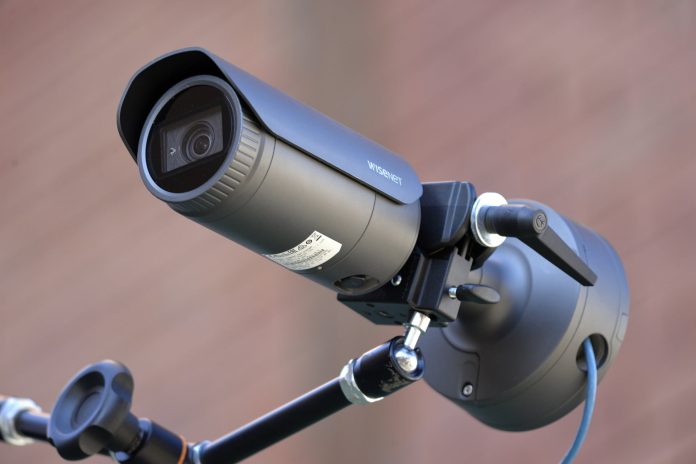Samsung Wisenet XNO-8080R is a 5MP bullet camera with WiseStream II support, a speedy F1.2 motorised varifocal lens with a range of 3.7-9.4mm, 30ips of resolution, H.264 and H.265 compression, 50m IR range, IP67/IP66, NEMA 4X and IK10 ratings against weather and vandalism, and video analytics including loitering, sound classification, fog detection, digital auto tracking and tampering.
SAMSUNG’S XNO-8080R 5MP bullet camera with WiseStream II support is a capable all-rounder, specifically designed and build for tough outdoor applications. Everything about the spec is hardy – holding this camera in the hand is a pleasure and I get no sense of shortcuts in construction. Fortunately for SEN, manufacturers tend to only send us their top-end gear to play with so it’s never hard to get excited about the high-quality cameras we test. Some are better than others and the 8080R is definitely in the better group.
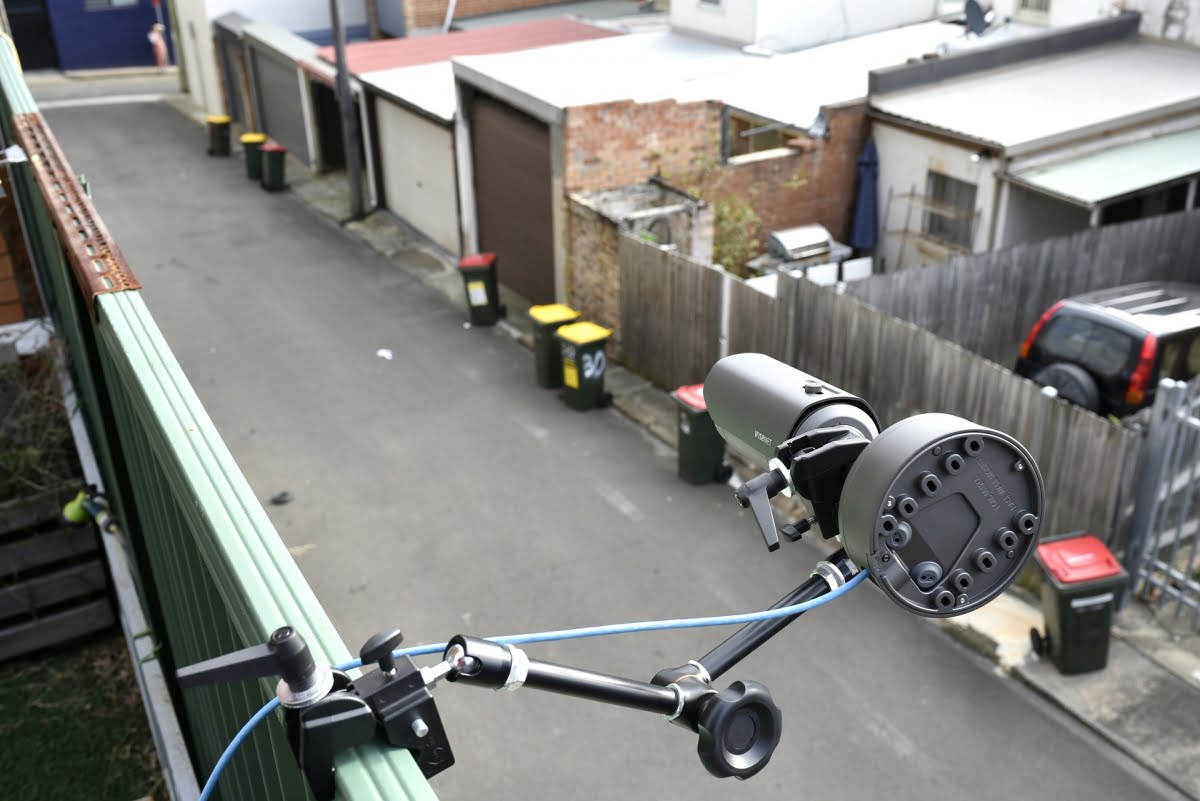
Typical Samsung, this camera is wonderfully built – everything fits together very nicely and the cable arrangement is tidy, although the RJ45 loop inside the base of the camera requires a tight loop during installation. Physically, the beautifully built cast-aluminium housing is 2.2kg and the dimensions are 391cm x 368.6cm. The 8080R has IP67 and IP66 ratings against weather, IK10 rating against vandalism and an integrated poly sunshade, which can intrude into the angle of view when extended at full wide. Temperature range is -40 to 55C and maximum power draw (PoE, 12V DC or 24 V AC) is 12.5W.
Optically, the 8080R has a fast F1.2 aperture motorised varifocal lens with a focal range of 3.7mm to 9.4mm. The lens has the usual magnesium fluoride coating on at least the first element – possibly additional elements, too, given its solid resistance to flare. When it comes to sensing, the 8080R delivers a resolution of 2560 x 1920 pixels from its 1/1.8-inch progressive scan CMOS sensor. Minimum scene illumination in colour wide open at a focal length of 3.7mm and an aperture of F1.2 is .07 lux at 1/30th sec – in monochrome with IR activated, it’s 0 lux. The Wisenet X series has WDR number of up to 150dB in some cases – the 8080R is 120dB – and there’s H.264 and H.265 Part 10 compression options in a range of resolutions.
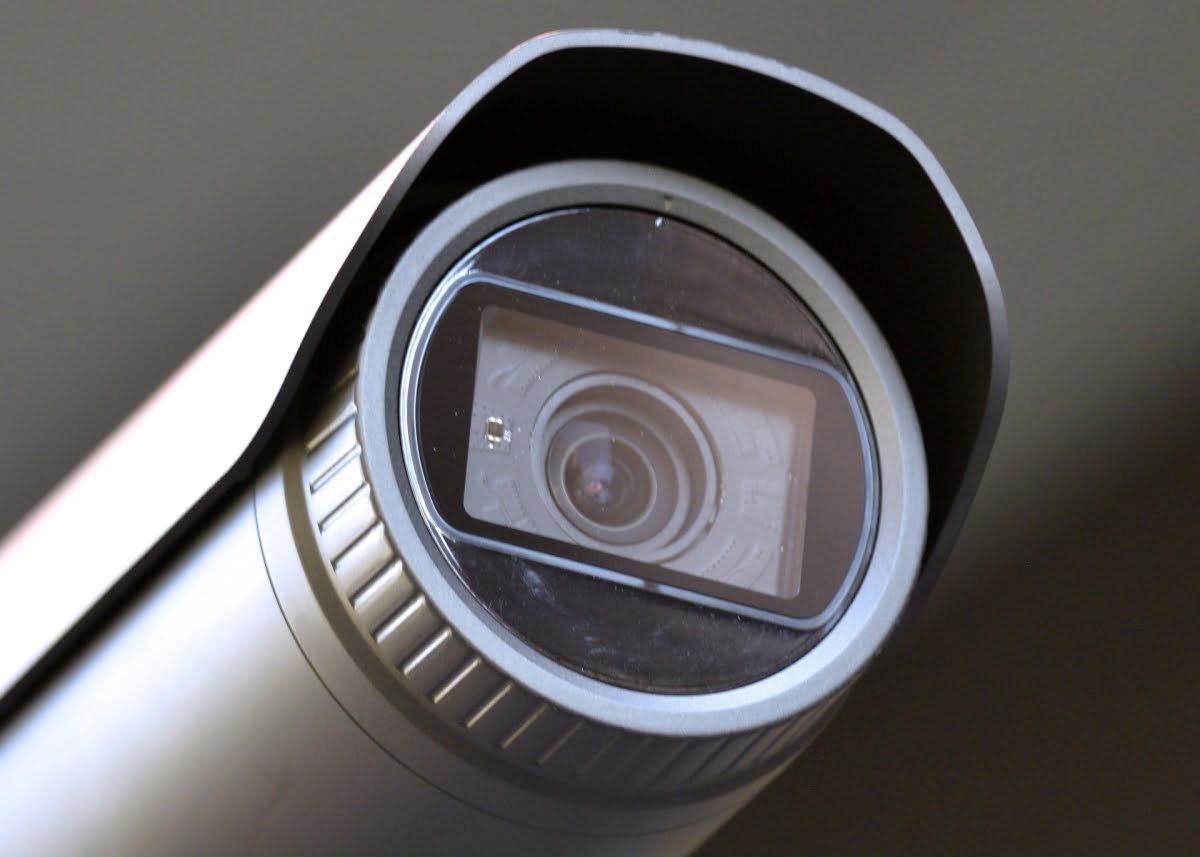
Camera functions include day/night and IR, backlight compensation, wide dynamic range, contrast enhancement, digital noise reduction, digital image stabilisation, de-fog, motion detection in 8 polygonal zones, gain control, white balance, contrast, lens distortion correction, electronic shutter, digital PTZ; flip, mirror and hallway views; and IVA. The IVA capabilities include loitering, direction detection, fog detection, digital auto tracking, sound classification, tampering, motion detection, handover.
The camera has SD/SDHC/SDXC slot, alarm input and output, alarm triggers on alarm event, motion, network failure, and audio, with alarm events including file upload to ftp, email, local or remote storage, external output or a remote PTZ preset. This camera has an internal web viewer and up to 20 users can access the camera simultaneously. There’s bi-directional audio and there are a couple of audio compression formats to select from, including G.711 and G.726.
Camera performance
How is the performance of the XNO-8080R? It’s strong. Considering the constraints of the camera’s compact focal range. The 3.7mm to 9.4mm motorised varifocal is ideal for the street work that typifies our testing ground. As mentioned, I leave the camera at 9.4mm for most of the test and find the long end and some digital zoom do a great job in the lane and the street. The cameras elevated resolution makes digital zoom a bonus – I can wind in a few mouse clicks and still be at full HD on the monitor. I have the bitrate locked at 6Mbps – not low but nothing a local link cannot happily handle. Is the extra bitrate worth the extra detail? Yes, it is.
I mess up when testing this camera – going from the wide end to the long end in the lane I miss the little focus icon under the zoom slider and wrongly assume the process is automatic. This mistake makes me think the camera is softer optically and digitally for an hour or so of testing. It’s only when I spin the camera around that I go searching for the focus button. Once I find it, performance is considerably improved.
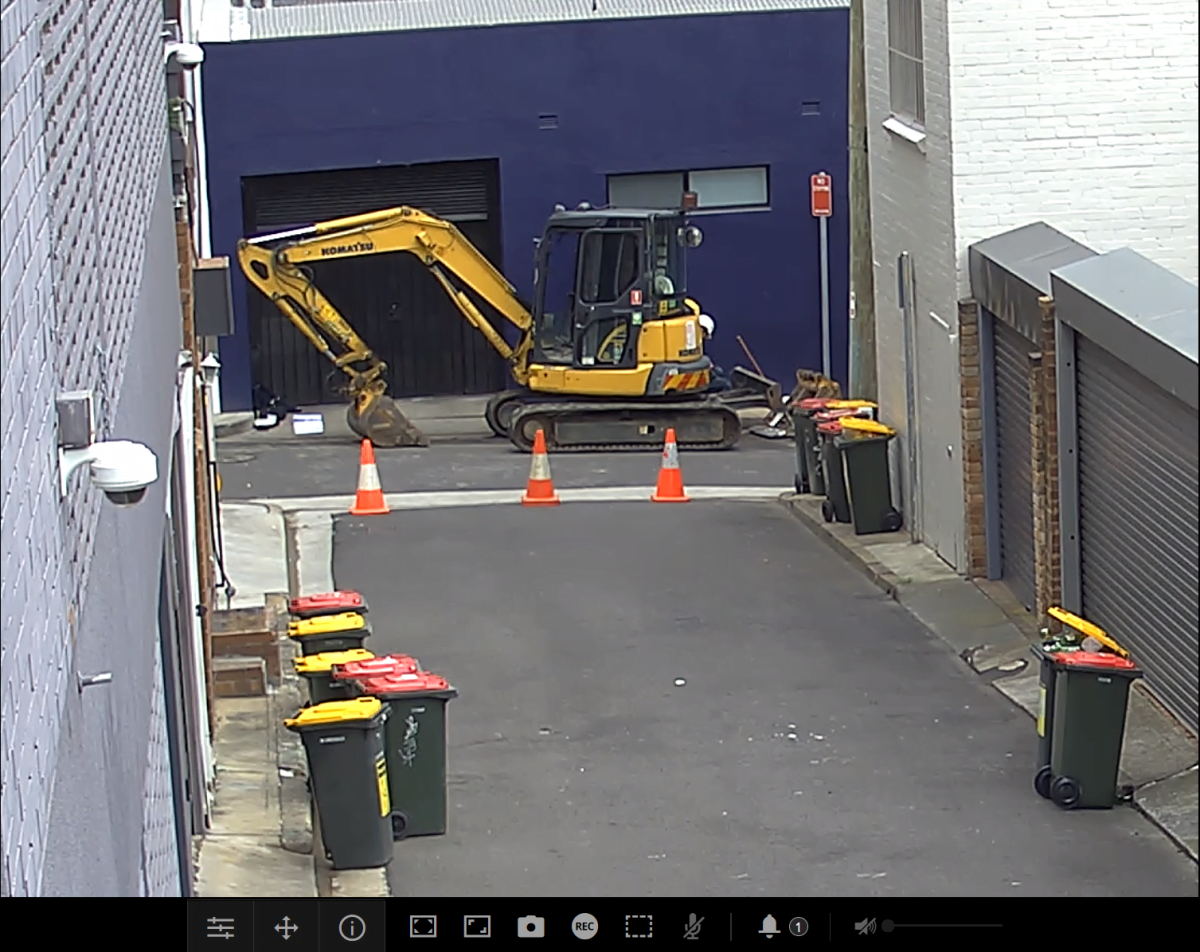
The 8080R exhibits mild longitudinal chromatic aberrations in form of purple fringing around high contrast edges – at F1.2, this is a fast lens, and that speed is contributing. The setup I like best in variable scenes is WDR locked into its lowest setting. For this application, medium and high WDR are too warm and impact on overall colour rendition. In the lane, I find backlight compensation is sufficient to dig detail out of variable scenes but out front in deep shadow and full sun, BLC is not sufficient. The camera exposes for the near side, over exposing the far side of the street. WDR low is the answer.
I’m driving the camera using the usual SEN test bed – a Dell 9020 Optiplex i7 – and we have no other cameras operating on the network. Something I notice with the 8080R is some latency that’s a bit longer than usual – around half a second, in my estimation. Viewing the live stream latency is not an issue and the video stream itself flows smoothly at 25ips.
I kick off the test looking up the lane in the late afternoon. I notice some CAs, high levels of detail in brickwork, modest barrel distortion at full wide, strong colour rendition, a pleasing tendency to expose for the focal point – the sky is over exposed, which is ideal. After spending a little time at 3.7mm I go through the process of zooming in to 9.4mm on the motorised zoom. This process involves hopping into setup, then video and audio, and then focus setup. Once you’ve clicked to required focal length, you hit the little focus button.
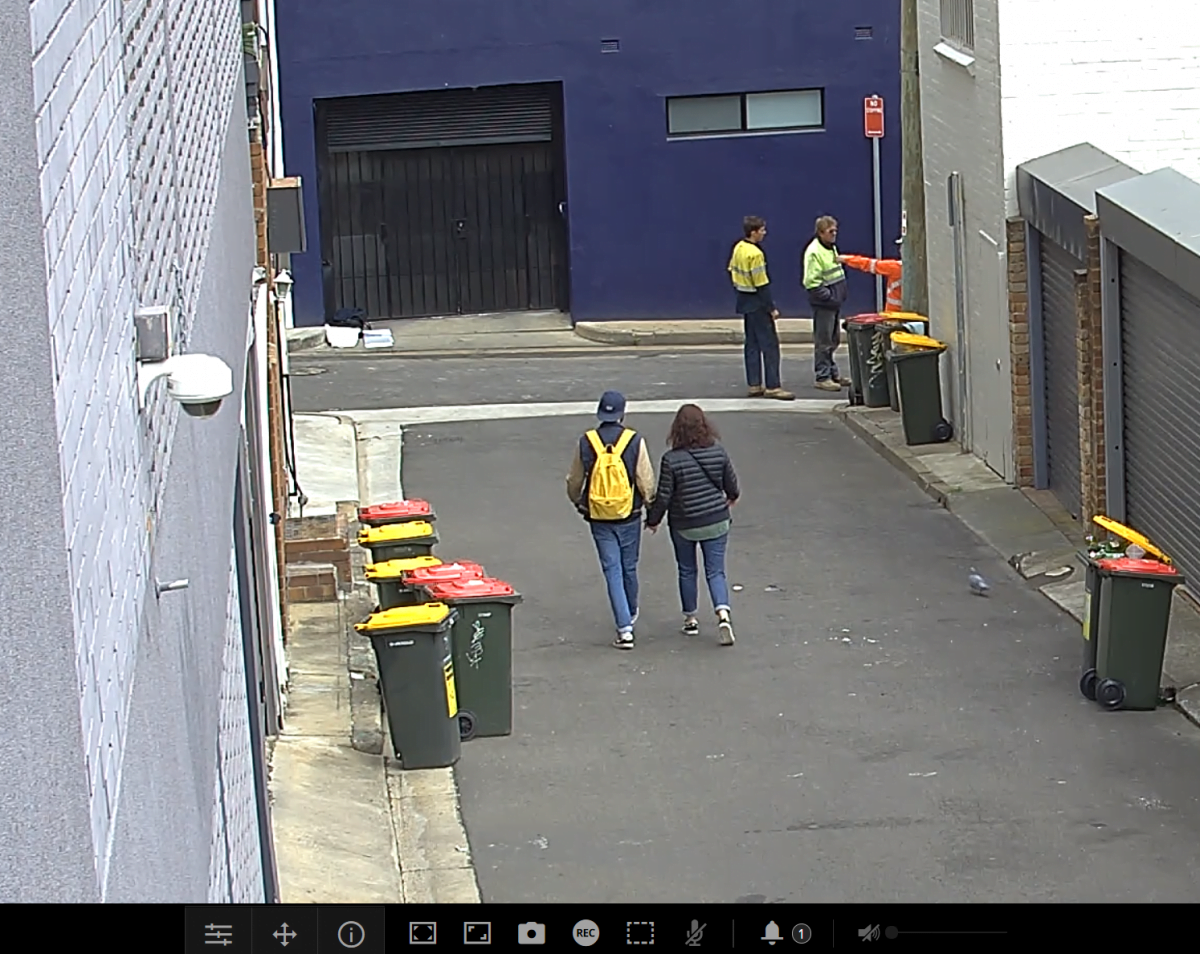
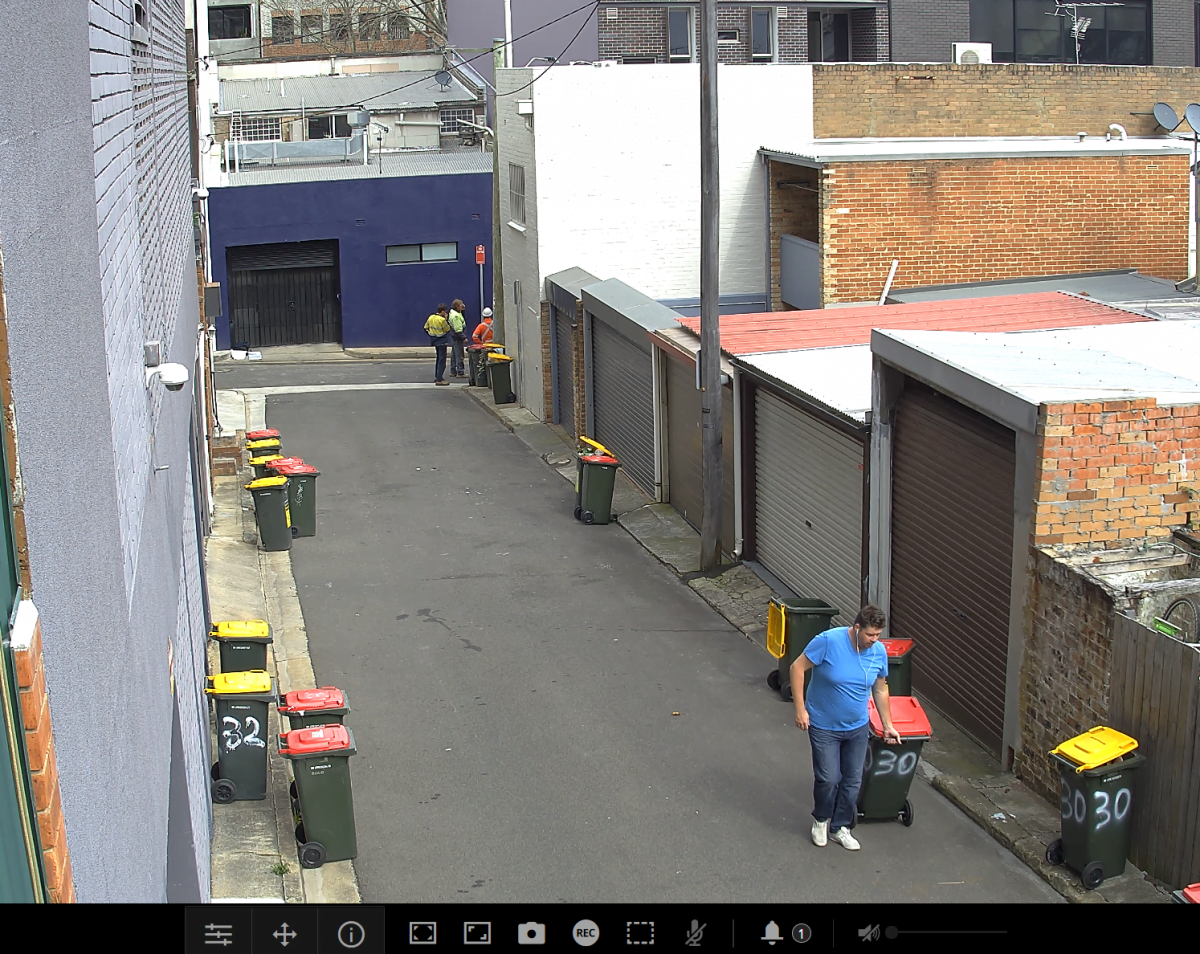
Next, I swing the 8080R down the lane to view a road plant that’s between 40-50 metres from the lens. Colour rendition is very good. What I suspected was excellent depth of field looking up the lane is confirmed as multiple groups move through the scene tens of metres apart. It’s not just that the depth of field is strong – the higher resolution of the 2560 x 1920-pixel sensor is coming into play here, too, as is my selection of a slightly longer focal length. Something to note is that the 2560 x 1920 image stream is displayed in 4:3 aspect ratio on my 16:9 full HD monitor.

Performance hold well as light levels fall. Noise in static scenes is very well controlled. As light levels fall the colour temperature shifts to cooler tones (I am still at WDR low and I decide to stay there to help with street lights and headlights). I am still getting good detail of clothing with no excessive blurring as we approach 5.30pm, which is twilight in Sydney this time of year. About 5 minutes later pedestrians begin to smudge a little and fifteen minutes later, we have full streetlighting in the lane and our detail is back again.
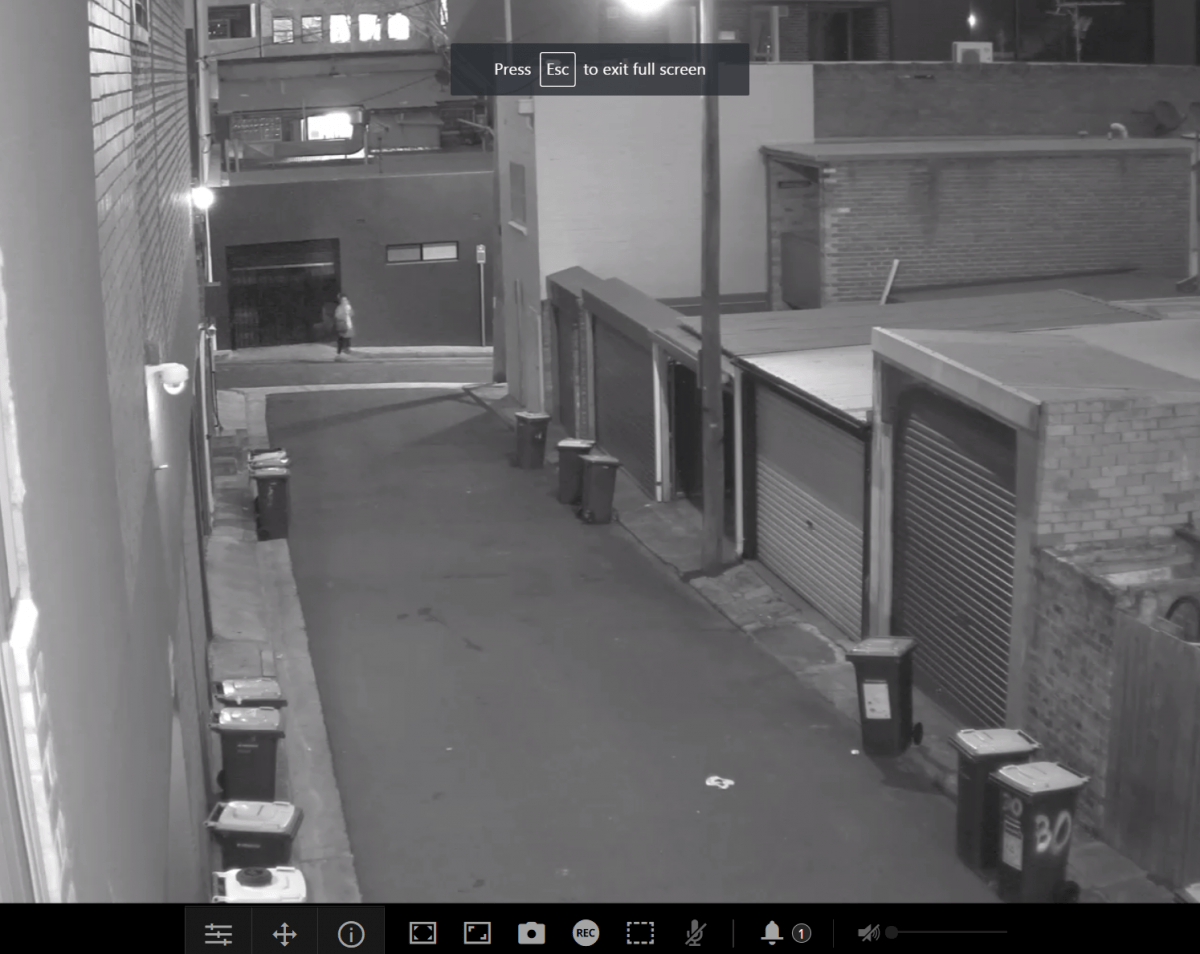
At 5.46pm, the camera switches over into night mode. I have a play with this for a while – light at the lens is sub-2 lux, and IR is now activated. The shutter speed has slowed down too – it must be at 1/50th of a second and I am experiencing slight motion blur at 50m. I lock the camera into colour and lo and behold, the motion blur has gone. There’s more than sufficient light in the lane to give excellent colour rendition but I am not getting faces, even close to the lens, nor plates, though control of headlight blooming is good. Something I notice as a pedestrian comes up the lane is the camera’s tendency to escalate ISO in areas of the scene experiencing movement – it’s more pronounced with vehicles but more on that later.
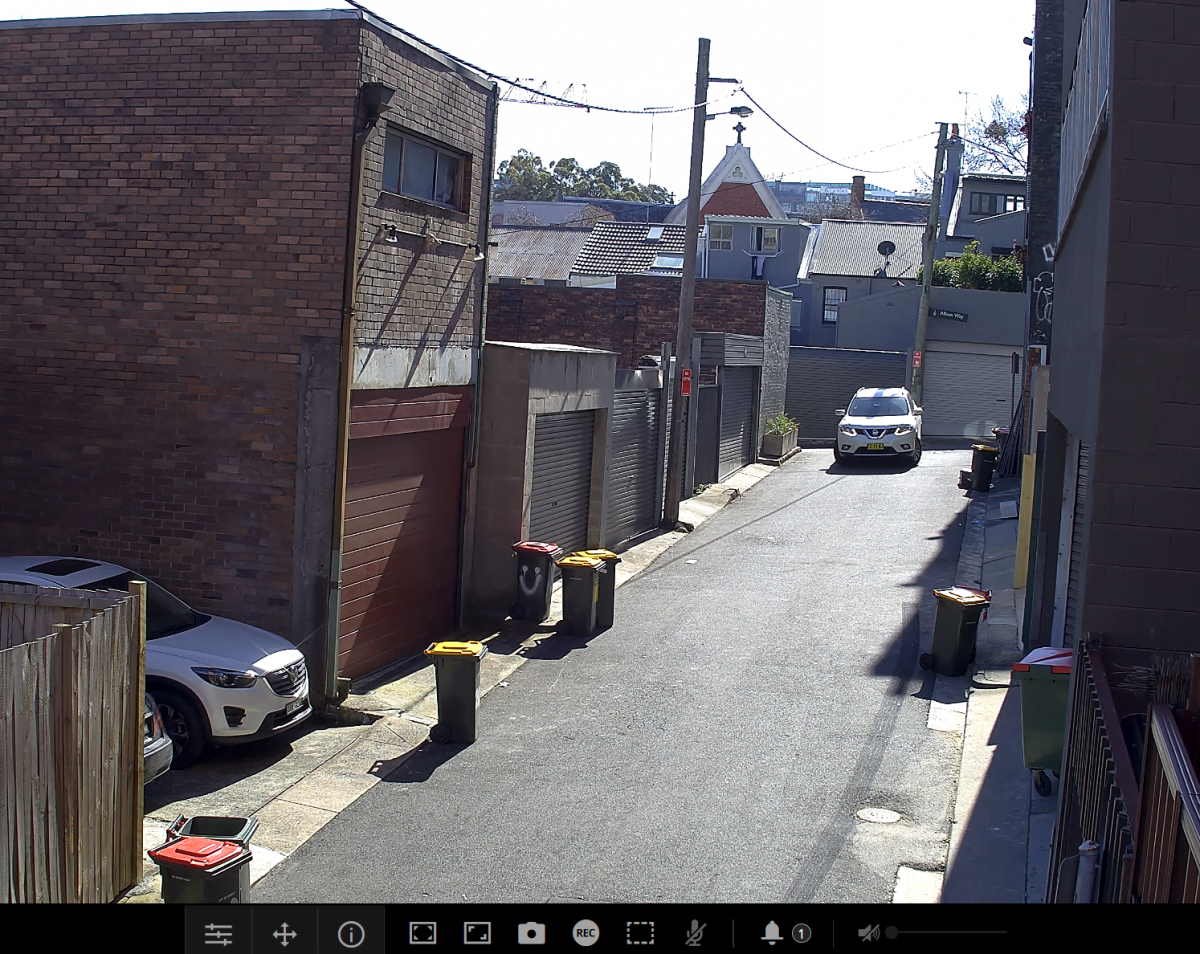
A nice image looking up the lane into 78,000 lux.
Next morning, I swing the camera back around to check out WDR performance – it’s strong. There’s plenty of detail – in fact, I have a plate at about 60m into morning sun, as well as tons of fine detail from adjacent surfaces. This is great performance. Depth of field in these conditions is very good, too. It’s not just good from close to the lens to the plate but it remains tight off into the distance and this comes down to the strong resolution, not only the solid WDR performance.

Shifting the camera to the front balcony is instructive, too. I begin out here with standard settings and noting the over exposure on the bright side of the street, I activate WDR low, which improves depth of field by levelling the exposure. The overall scene is a little on the warm side but it’s a big improvement. This is a great scene to test cameras destined for the street, with plenty of foot and street traffic, and a proper depth of field – out towards 100m by the time we are at Albion Street.
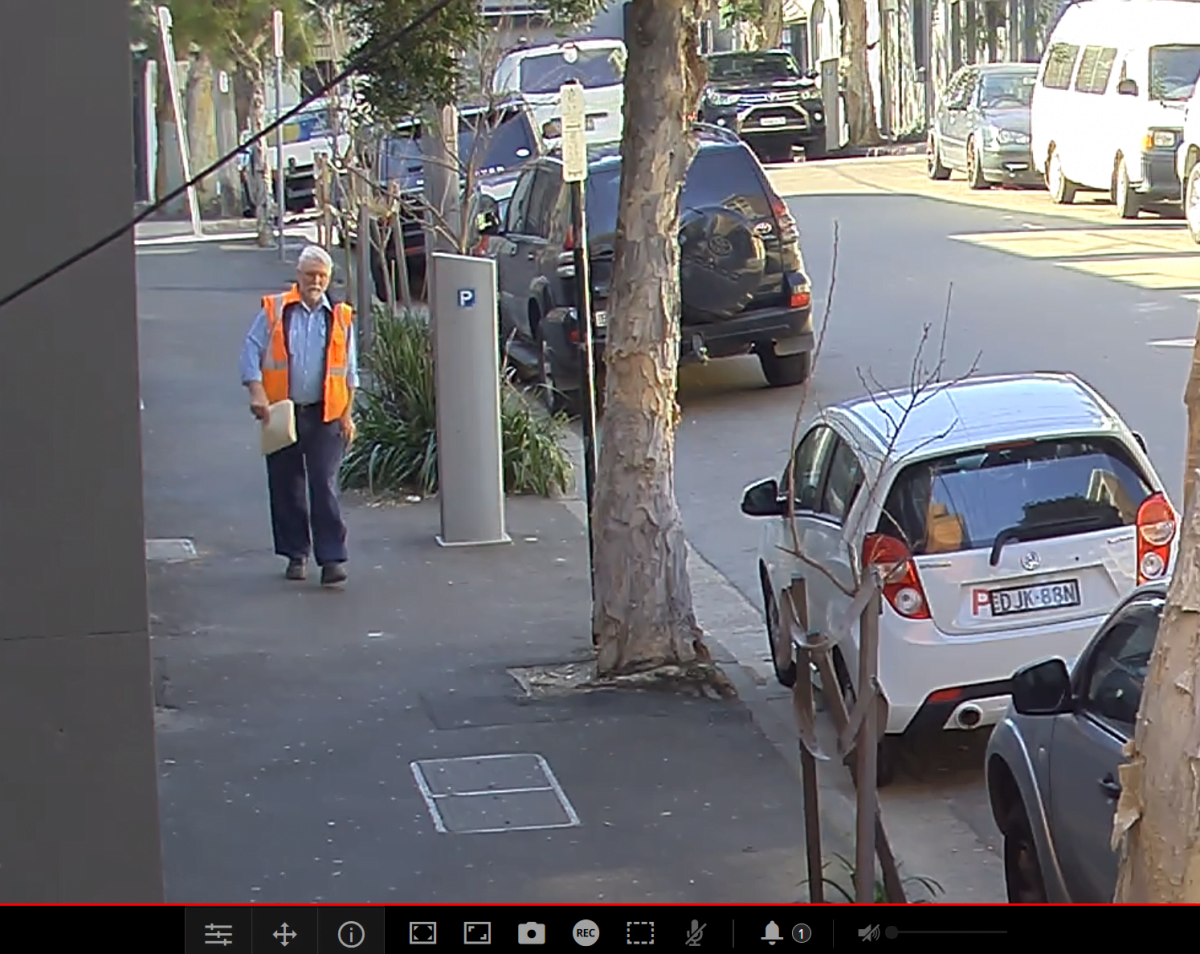
It’s here I start to get a real appreciation of the camera’s ability to look deep into scenes and snare plates and faces. That relatively modest focal length is part of the reason for this performance but the other part is the increased resolution. I’m driving through the browser and find myself rolling in the digital zoom with the mouse wheel and pulling the image to frame cars and pedestrians – this capability makes the 8080R a real weapon on the street.
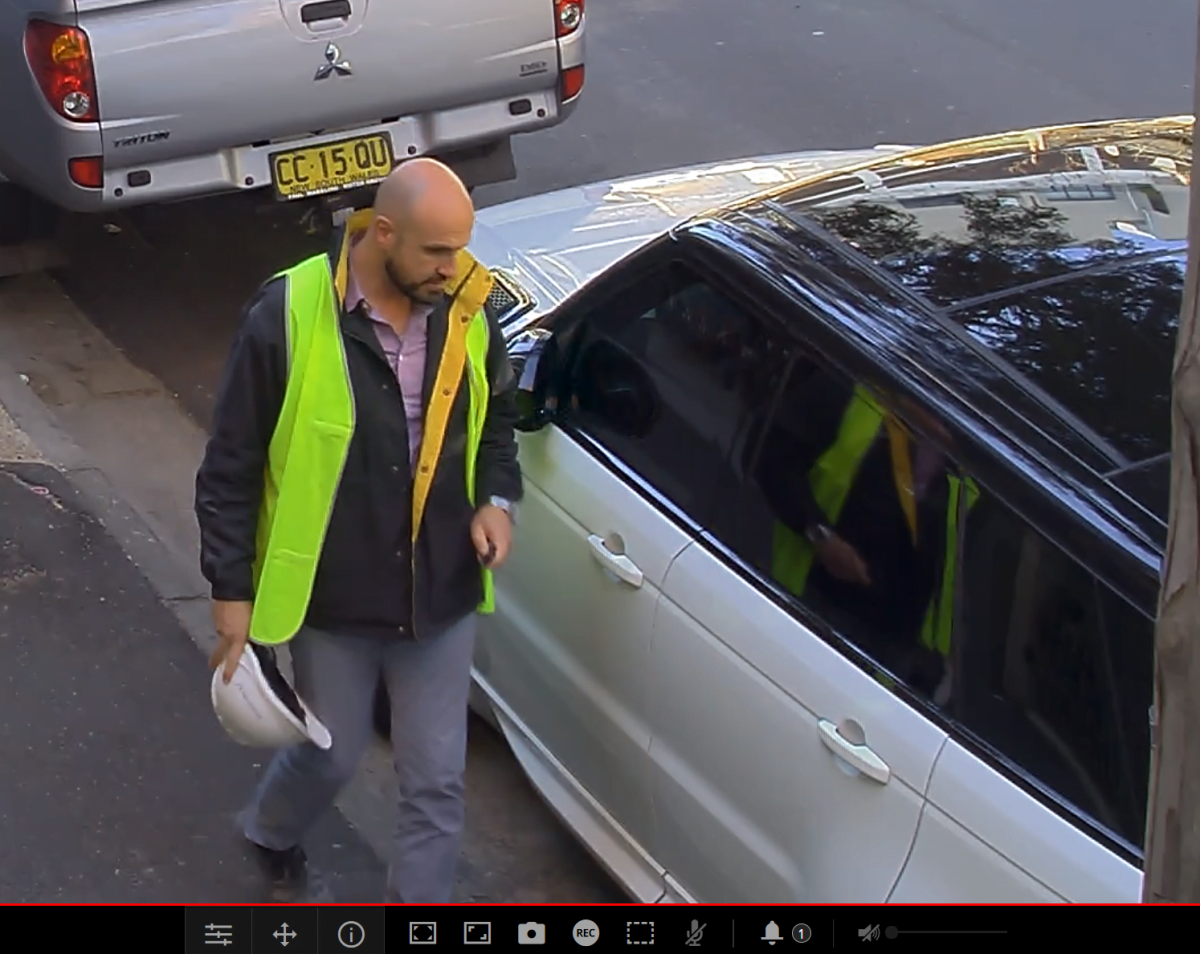
I also notice that I get more than usually good levels of detail over the road of pedestrians in the brightest part of the scene. It’s not crystal clear but I’m getting borderline court admissible faces and high levels of clothing detail. With images captured under digital zoom I’m getting court admissible face recognition at 25m, which is exceptionally good. Close to the camera, I’m getting excellent face recognition and the more I make use of digital zoom during captures, the better these images prove to be. Depth of field is great, too.
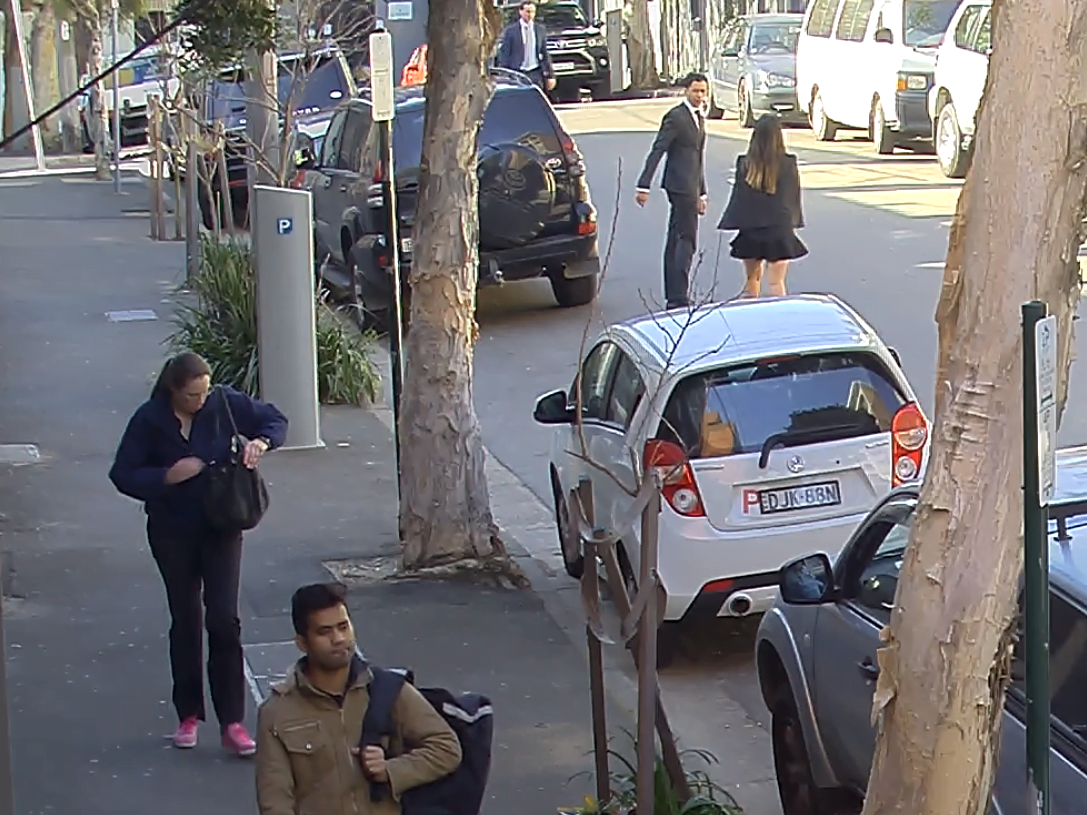
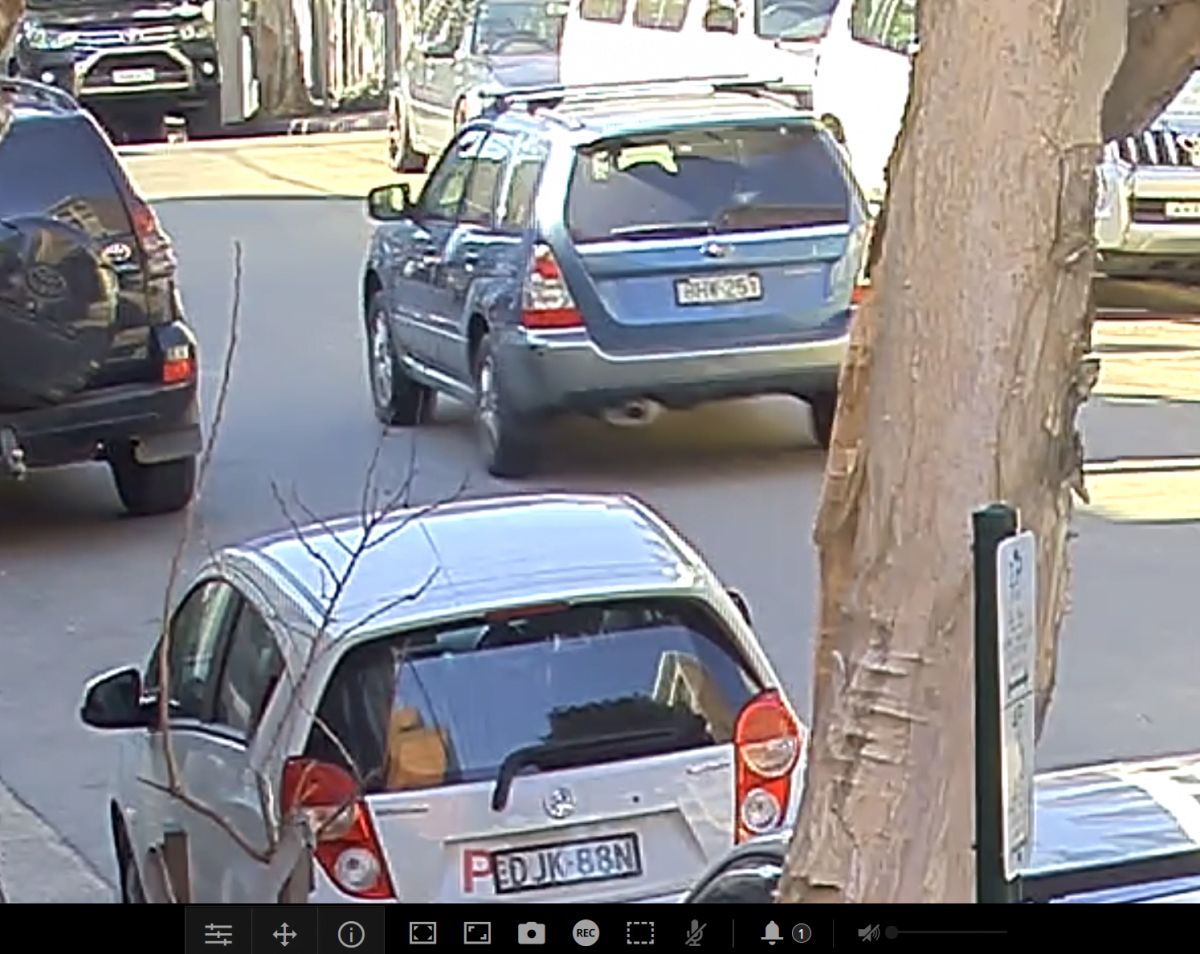
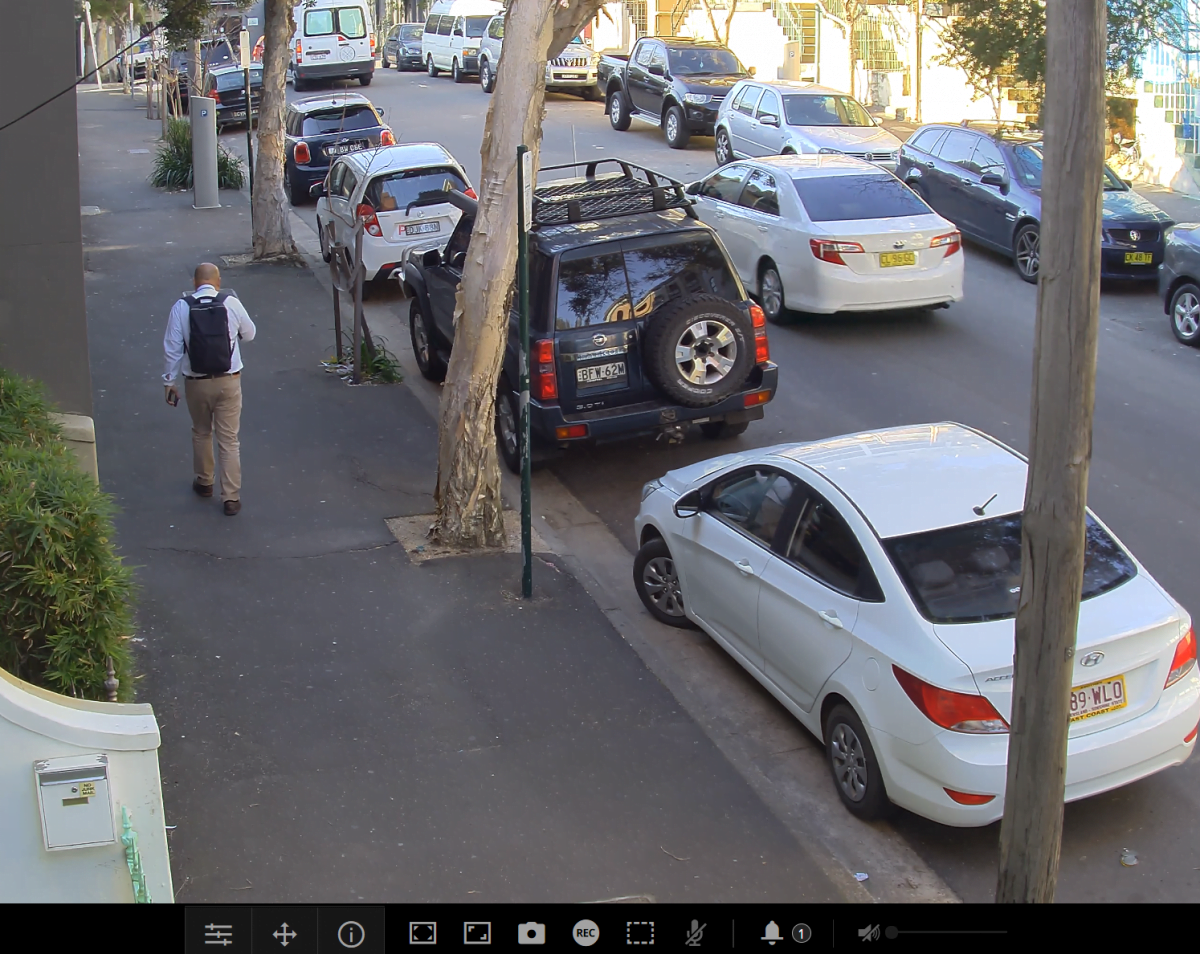
As the afternoon wears on, I start getting a little blur/noise around fast-moving objects – arms and feet – on the shaded side of the street but plates of fast moving vehicles remain and I find the camera is able to hold them much later into the evening than I’d have expected for a higher resolution sensor. This camera is able to get a plate at around 45kmph at 5.24pm when I measure 20 lux in the deep shade outside the office door – this is the best low light performance when it comes to plates I can recall out here – bear in mind that I’m using digital zoom and capture to snare the images.
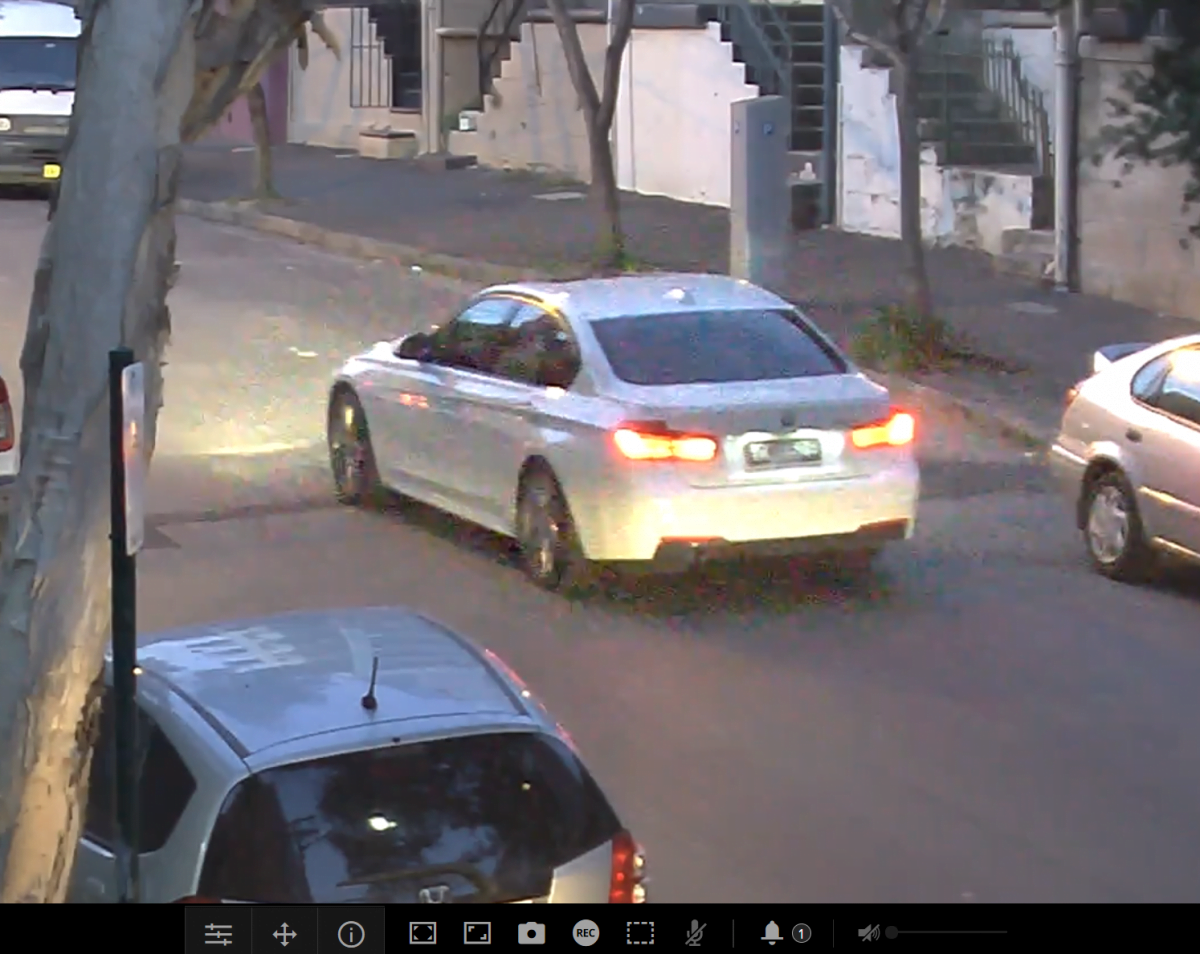
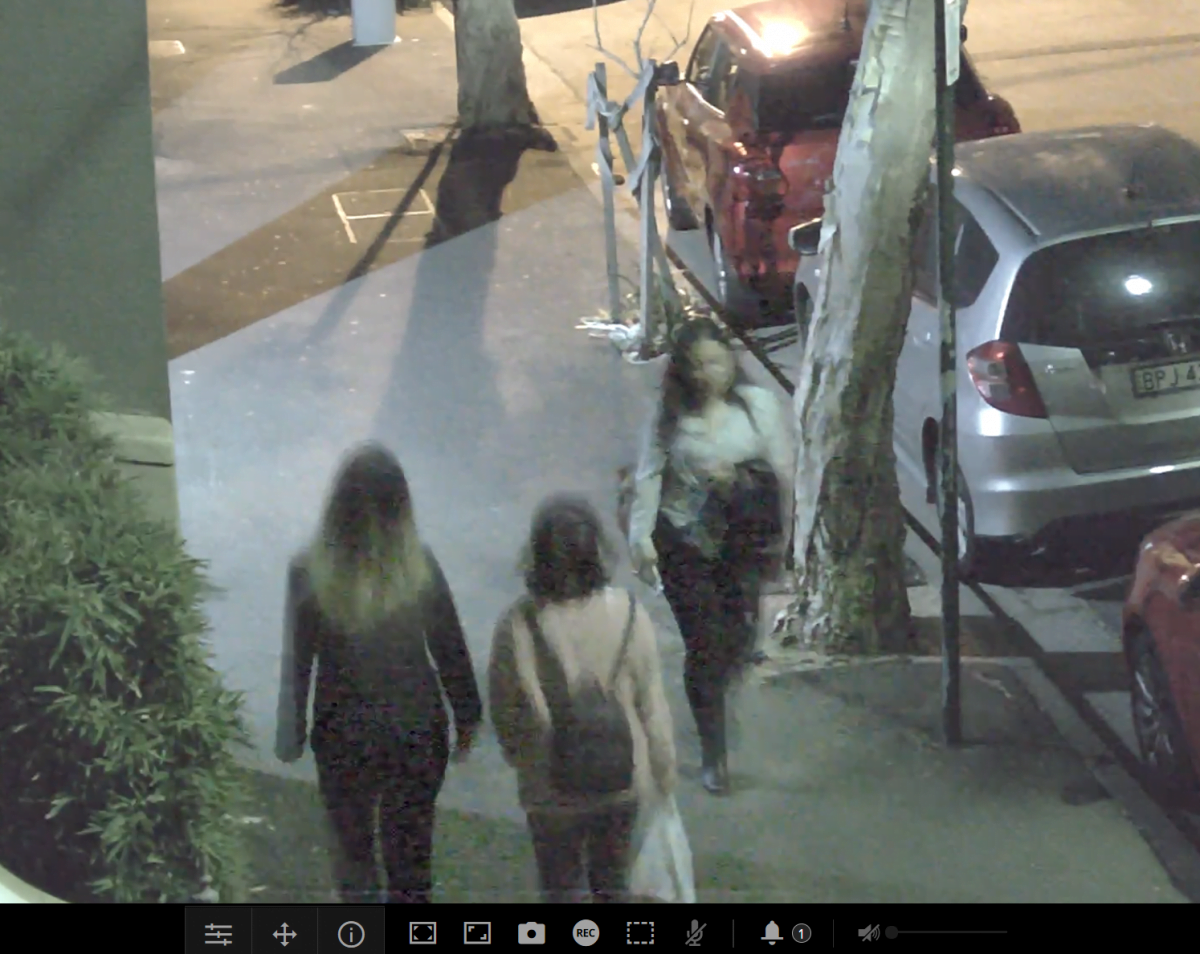
I’m still getting faces at this time of day, too but fifteen minutes later, motion blur is taking its toll in sub-10 lux colour. While I’m not longer getting clear faces, I have clothing detail and full situational awareness. Something I notice out here from about 5.30pm is the camera’s tendency to boost ISO around movement – I mean really boost ISO. It was this boosting of amplification that snared me the plates at 5.24pm and while it helps with detail later on, it’s not sufficient to give me plates unless they are black and white – in such cases I find I can get a couple of digits or letters, not the full plate.
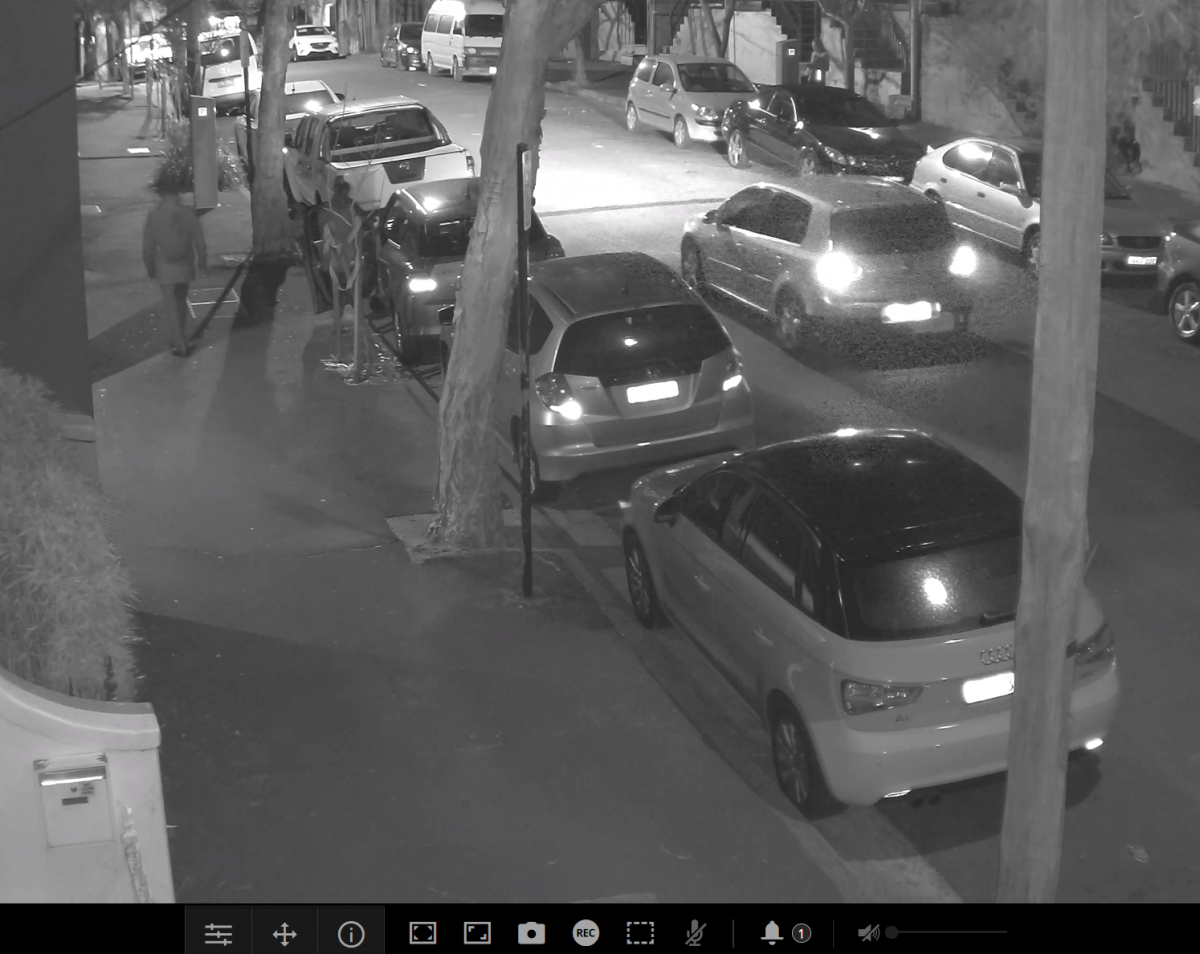
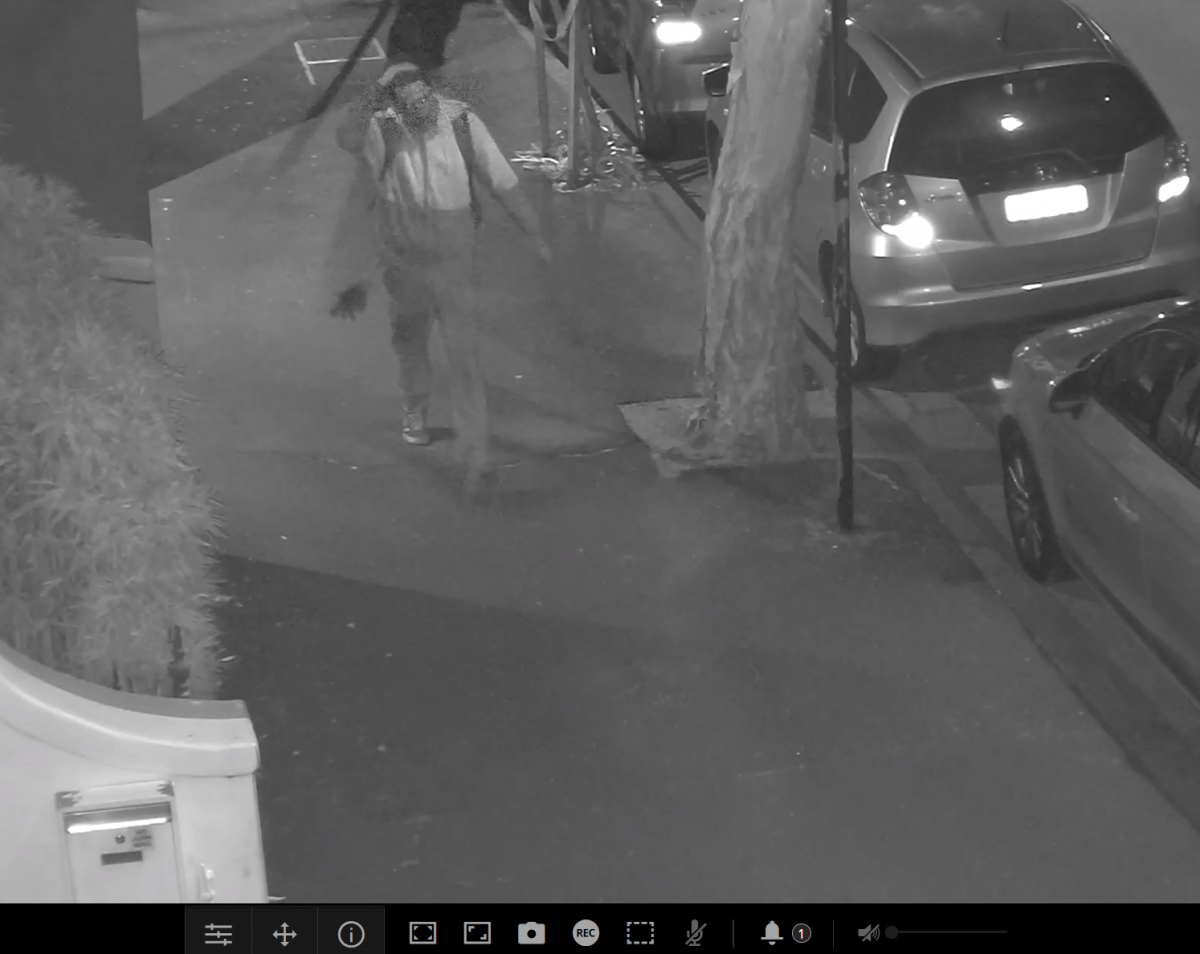
The camera goes over into monochrome at 6.05pm (I have IR activated) and while I think night mode is giving me more contrast in low light, I’m not getting faces or plates, though I can see clothing, bags, the presence of spectacles, hair colour and association between pedestrians deep into the scene. Flare off numberplates gives me a sense of the IR range of the 8080R – it’s solid, especially up to 30m.
Conclusion
In short, the Samsung 8080R offers good colour rendition, great depth of field and low blur in good light that’s held almost until night mode. I rate the ability to snare moving plates in colour at around 10 lux as being the best I’ve tested – this is at a focal length of 9.4mm. The 2560 x 1920-pixel resolution pays dividends in this form factor – I’m able to get clear face recognition down under 10 lux, though there’s a point at which this ability fades – it’s between 7-4 lux.
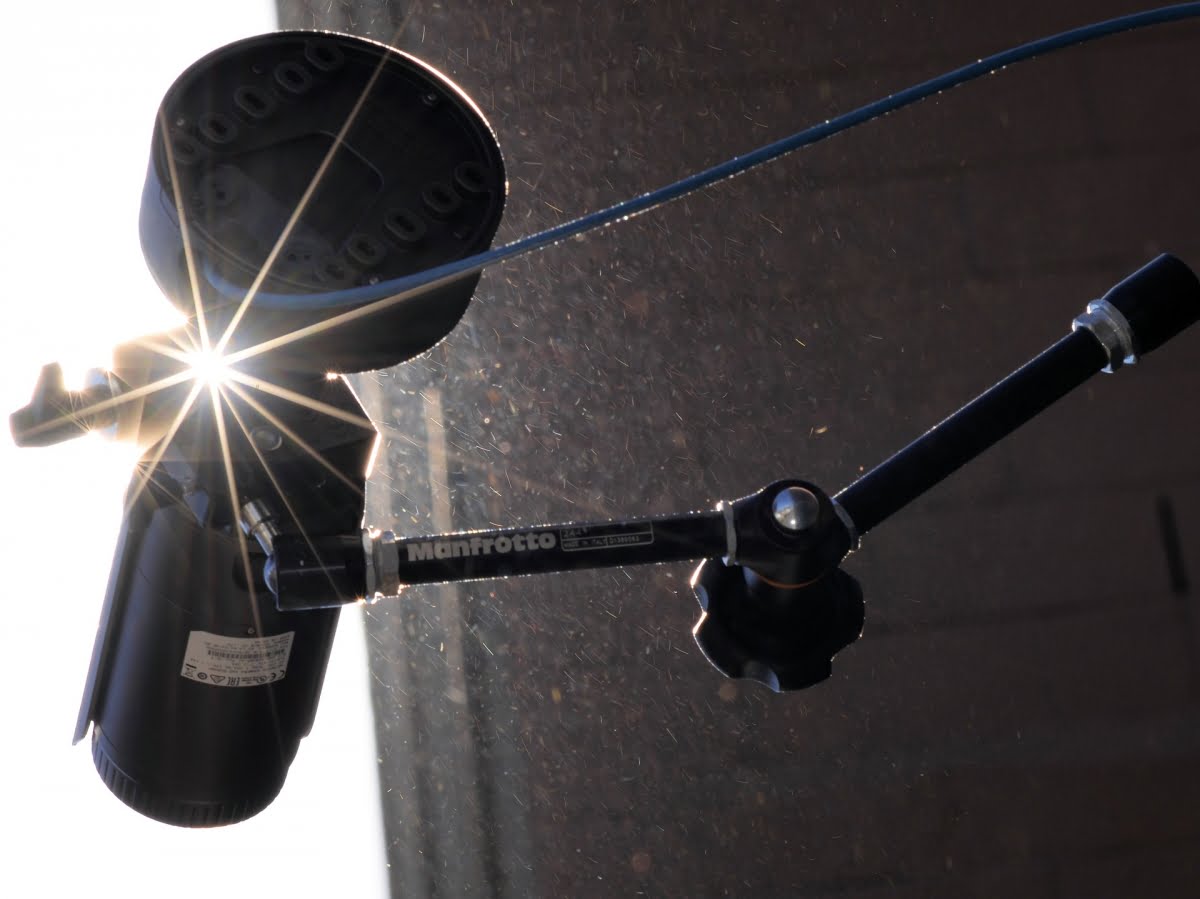
The focal range is ideal for the street, giving investigators the ability to get faces past 25m and useful detail towards 50m at the long end – both in good and failing light. The 8080R performs very well in the face of WDR, too, returning images replete with high levels of detail and devoid of blooming or veiling flare. The excellent physical specification makes the 8080R a worthy competitor in the external bullet camera market. ♦



